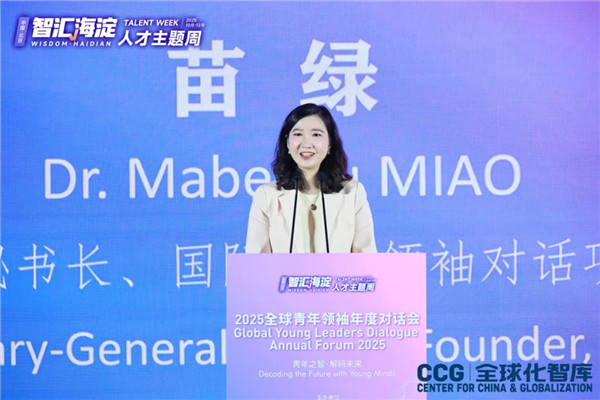Wang Huiyao: CPTPP marks a higher level of free trade
November 30 , 2020
By Wang Huiyao | Founder of the Center for China and Globalization(CCG)
The Regional Comprehensive Economic Partnership, which was signed in mid-November by China, Japan, Australia, New Zealand and the ASEAN countries, when fully implemented, will be the world’s biggest free trade agreement measured in terms of GDP.
It will inject strong momentum into regional and global economic growth, and further promote China’s construction of a new open economic system in the new era.
Countering the setback to economic globalization in recent years, the much-anticipated RCEP covers almost a third of the global population and about 30 percent of global GDP.
On Nov 20, just a week after the RCEP signing ceremony, Chinese President Xi Jinping said that China welcomes the signing of the RCEP and will favorably consider joining the Comprehensive and Progressive Agreement for Trans-Pacific Partnership.
The statement, which was made at the 27th Asia-Pacific Economic Cooperation Economic Leaders’ Meeting, has attracted considerable global attention and is a milestone in China’s openness to the outside world and its support for regional multilateralism and free trade.
Compared with the RCEP, the CPTPP is a higher standard free trade agreement with a higher entry threshold. The agreement provides greater access to the services sector, investment protection and guarantees, more chances in government procurement, facilitative framework for the digital economy and intellectual property protection.
With China, the CPTPP would cover nearly 28 percent of global GDP. The CPTPP, in its current form, would generate global income gains estimated at $147 billion annually.
If China were to join, these gains would quadruple to $632 billion, according to projections by the Peterson Institute for International Economics. Chinese membership would also bring more of the regional economy under a formalized set of rules driven by multilateral consensus, supporting growth and stability.
Joining the CPTPP will continue China’s policy of opening its markets to foreign competitors. One desirable consequence of this is that Chinese domestic firms, including those in services and high-tech industries, will be forced to upgrade their products to compete with world-class firms.
Many people believe China will not join the CPTPP because doing so will require big domestic reforms in intellectual property rights, data flows, the environment protection, labor standards and State-owned enterprises. But recent reforms and progress in all these areas show that China does have the capacity and the determination to carry out such fundamental reforms.
First of all, China has been increasingly enhancing intellectual property protection in recent years. It has ranked first in the world in the number of patent and trademark applications for many years. At the same time, the implementation of the Foreign Investment Law and the first phase of the US-China trade agreement has also secured intellectual property rights for foreign investors and foreign-invested enterprises. All these have laid a solid foundation for China’s accession to the CPTPP.
Second, the digital economy currently accounts for more than one-third of China’s GDP and the amount of Chinese data overseas is enormous. Chinese technology enterprises such as Alibaba, Tencent, Baidu and Huawei have gone global and are having a big impact in the international market.
In fact, to restrict the data flow is a lose-lose situation. Data, like capital, products, people, and other economic factors, need to flow. Therefore, it is possible to improve data regulation and promote global digital governance and, at the same time, to also adopt a moderately open attitude toward cross-border data flows.
Third, China aims to have carbon dioxide emissions peak before 2030 and achieve carbon neutrality before 2060. The goal of building an ecological civilization was written into the Constitution during the 13th Five-Year Plan period (2015-20).
“Lucid waters and lush mountains are invaluable assets” became a well-known idea on green development nationwide. China’s green development awareness and technology level will be greatly enhanced in the future.
Fourth, in the wake of the COVID-19 pandemic, many countries feel that China’s well-organized, government-led system of governance works well. Its organized model of labor unions is not necessarily bad. China is also reforming the form of labor unions, such as by increasing worker training and strengthening labor cooperation and working with the government to protect worker welfare.
Last, as for SOE reforms, the State Council, China’s Cabinet, recently proposed a three-year action plan to reform State firms, focusing on eight key tasks.
The plan stressed efforts to optimize the layout and structure of the State-owned portion of the economy, to make it more competitive, innovative, controllable, influential and more resilient to risks.
The SOE reform supports efforts to accelerate the integration of new information technology and manufacturing, speed up the innovative development of the industrial internet, hasten the fundamental transformation of manufacturing processes and enhance the level of digital, networked and intelligent modes of manufacturing.
The signing of the RCEP has laid a good foundation for China’s accession to the CPTPP, which is both a goal and a means.
Against the background of intensified economic and trade as well as technological competition between China and the United States, China’s accession to the CPTPP can improve its international trade environment and geopolitical ecology, win space for its economic development and cooperation, and enable it to deeply participate in the adjustment and reconstruction of the global value chain and industrial chain.
Joining the CPTPP will accelerate the reform of relevant institutional mechanisms in China, increase its openness and deepen its integration into the international economic and trade system.
China can participate in the reform, integration and deepening of the global governance system and build a fairer and more equitable international order by relying on multilateralism, while further participating in international economic and trade rule-making.
The Trans-Pacific Partnership, or TPP, agreement, now the CPTPP, was signed by the Obama-Biden administration before leaving office, but Trump withdrew from it on his first day in office. There are voices for President-elect Joe Biden to rejoin the pact, so there is even a chance that China and the US could one day come under the CPTPP’s common umbrella. Chinese membership could help reduce frictions by aligning China closer with progressive global trade norms.
China’s accession to the CPTPP as soon as possible is expected to add a new dialogue platform for China and the US, which can promote a rebound in US-China relations and establish a new platform for China and the US to resolve trade disputes.
If China and the US reach a framework economic and trade agreement within the CPTPP, it can also provide reference for the reform of the World Trade Organization, which is expected to advance significantly.
WTO decision-making requires the consensus of 164 member countries. Lots of issues have not been agreed upon, especially in the current geopolitical context. The CPTPP has only 11 countries currently, which is relatively flexible and efficient.
The WTO was originally about trade in goods. As the higher standard FTA for the 21st century, the CPTPP focuses on the digital economy, the services sector, and the high-tech sector. Many countries, including the United Kingdom, South Korea, and Thailand, have applied to join the CPTPP.
Since the start of reform and opening-up more than 40 years ago, China has consistently embraced multilateralism and free trade. Billed as a “next-generation” trade agreement for its high standards and focus on emerging sectors, the CPTPP covers nearly 500 million people and more than $13 trillion of GDP.
Notable for accommodating very different economies and political systems, the pact members include industrialized Western economies such as Canada and Australia, and emerging markets such as Vietnam in Asia and Latin America.
If China joins the pact, that would be of similar importance, both to itself and to the world, as was joining the WTO almost 20 years ago.
From China Daily, 2020-11-30
Topical News See more






